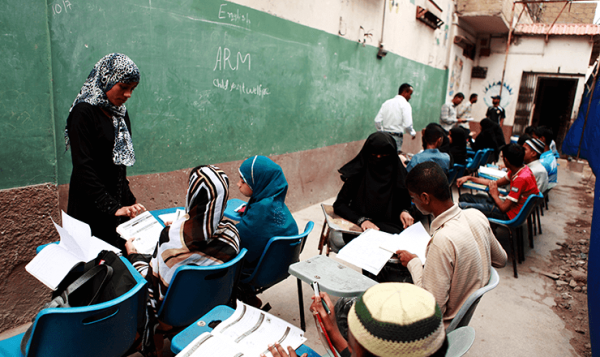Increasing Net Enrolment Rate in Pakistan

By Ayla Qayyum

Source: World Education
The educational progress of a country can be measured in terms of several indicators. One of these is the net enrolment rate (NER), which is defined as the total enrolment of school-going age children as a proportion of total school-age population. In Pakistan, the NER at the primary and secondary level of education has been dismally low. It barely increased from 60.8% in 2006 to 67.6% in 2018 at the primary level, and from 30.5% in 2006 to 37.4% in 2018 at the secondary level. In order to make improvements in this realm, several strategies can be adopted.
Conditional cash transfers are becoming a popular tool for increasing NER. To reap this benefit, Punjab introduced a Female School Stipend Program in 2003, where quarterly subsidies were provided to girls enrolled in the secondary level, with the condition that they attend at least 80% of classes. Two years into implementation of the program, enrolment of females increased by approximately 10%. There was also evidence that these girls delayed marriage by more than a year and had fewer births by the time they were 20. While these are only early outcomes, they have the potential to translate into significant gains in future productivity, fertility, and intergenerational human capital accumulation. Therefore, a strong focus should be placed on such programs because their positive impacts are sustained beyond the short term.
Provision of meals in schools has a substantial impact on improving NER. In 2002, Tawana Pakistan Project was launched to address the dismal school enrolment and nutritional status of young girls in 29 high-poverty districts. The School Nutrition Package included the provision of a midday meal at a cost of Rs. 7, deworming medicine and multi-micronutrient supplements. Two years later, enrolment in these districts increased by 40% and females’ ability to plan balanced meals improved. However, the implementation progress was slow due to improper collection of data, lack of training and leadership, disruption in supply, provision of nutritionally inadequate meals, and sub-standard quality of medicines. Therefore, it is crucial to implement effective school-meal programs to incentivize children to attend schools.
Participation of non-governmental organizations (NGOs) in the educational landscape contributes to an improvement in NER. Pakistan’s education-oriented NGOs assume several significant roles such as service delivery, advocacy, capacity building, innovation, research and social experimentation. Majority of the NGOs rely on running schools with effective community-based participation, which is achieved through extensive mobilization, formation of committees, and child-centered methodologies. Other initiatives include rehabilitation of non-functional and troubled schools, improvement of existing infrastructure of government schools, and revitalization of district education planning. Therefore, it is crucial for Pakistan’s government to encourage NGOs to play an active role in the education sector.
Pakistan is a multilingual country with 6 major and over 59 small languages. However, Urdu and English are the mediums of instruction in most schools in urban and rural areas. It is important to highlight that a particular medium of instruction can impact a child’s personality, learning, comprehension of fundamental concepts, and relationship with education. With an unfamiliar set of words, a child may suffer from lack of confidence, dissipated attention and unease; due to this, he/she will be more inclined to drop out at the primary level. Therefore, it is proposed that mother tongue or a local language should be used for the first three years of schooling, a language of wider communication (such as Urdu) during school, and English in post-secondary education and university.
In addition to these, a few other interventions have to be considered to increase the country’s NER. As opposed to the prevalent belief, there is a large-scale cultural acceptance of co-education at the primary level. Therefore, co-education should be encouraged as it will increase access of both males and females to schools. Moreover, as a child’s primary caregiver is the mother, it is pertinent that female teachers are appointed at this level to ensure a sense of comfort among children. It is important to note that interventions should not be tokenistic and unresponsive to the needs of marginalized groups. For females, transportation or chaperon service should be provided to assure their parents of security. For children who are impaired, there should be a preparation of individualized educational plans, teacher training, provision of aids and appliances, appointment of resource teachers and therapists, and provision of ramps and disabled-friendly toilets. Most importantly, authorities should place an emphasis on making schools a more enjoyable place, with respectful teachers, interesting curriculums, and provision of basic facilities.


